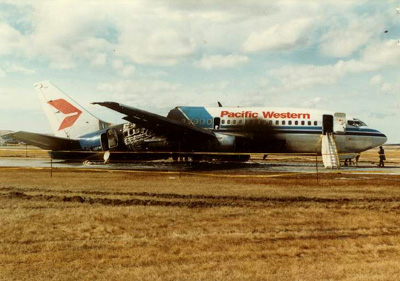Crash of a Piper PA-31-310 Navajo B in Calgary
Date & Time:
Aug 16, 2024 at 1244 LT
Registration:
C-FZHG
Survivors:
Yes
Schedule:
Jasper – Calgary
MSN:
31-753
YOM:
1971
Crew on board:
1
Crew fatalities:
Pax on board:
0
Pax fatalities:
Other fatalities:
Total fatalities:
0
Circumstances:
A Piper PA-31 Navajo operated by Airborne Energy Solutions Inc. was conducting a round robin instrument flight rules flight from Calgary International Airport (CYYC), AB, to Hinton/Entrance Aerodrome (CEE4), AB, and back to CYYC with only the pilot on board. The plan was to conduct the flight without refueling in CEE4. Prior to departure from CEE4, the pilot determined there was sufficient fuel for the return flight to CYYC. While in cruise, with the left engine being supplied by the left outboard tank, the pilot observed the left engine fuel pressure start to fluctuate, and the engine operation became erratic. The pilot then selected the left engine to run on the left inboard fuel tank. Concerned about the fuel quantity in the left-wing fuel tanks, the pilot elected to cross feed the left engine from the right-side fuel system. During the final approach into CYYC the right engine stopped running. The pilot secured the right engine, feathered the propeller, declared a Mayday with ATS and elected to continue the approach. Two to three minutes later, the left engine stopped operating, and the pilot proceeded to perform a forced approach onto a golf course located directly south of the approach end for Runway 35R. The aircraft came to a rest approximately 1/2 nm south of the threshold for Runway 35R. The pilot received minor injuries; however, the aircraft was substantially damaged. There was no post-accident fire. On site post-accident examination of the aircraft found the left-hand fuel selector in the outboard position, the right-hand fuel selector in the off position and the cross-feed valve in the off (normal) position. The aircraft was subsequently removed from the golf course and transported to a secure location for further investigation. The investigation found that there was no fuel remaining in the left inboard, left outboard and left nacelle fuel tanks. The right nacelle tank was empty, however approximately 24 USG were recovered from the right inboard, and approximately 29 USG were recovered from the right outboard fuel tanks.




























